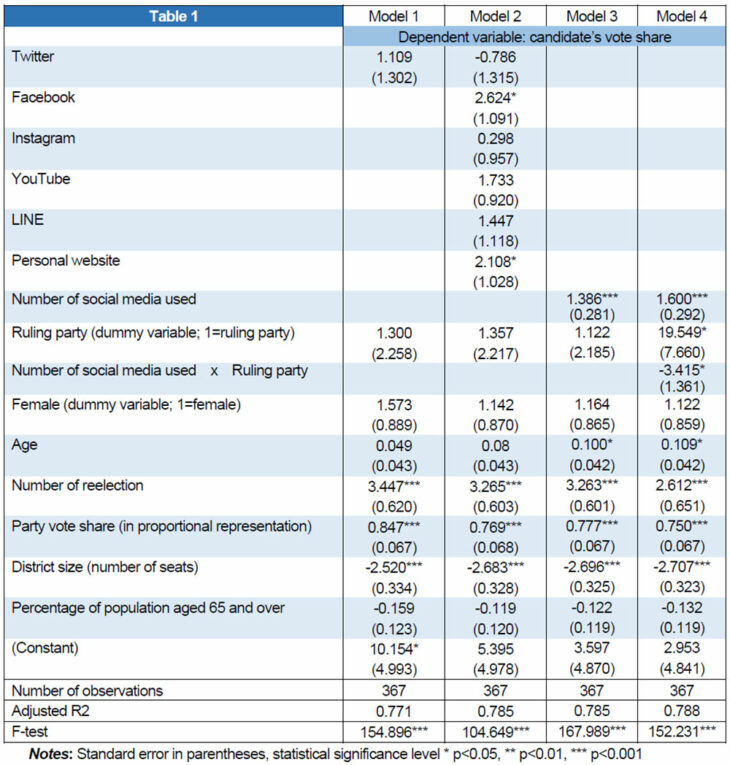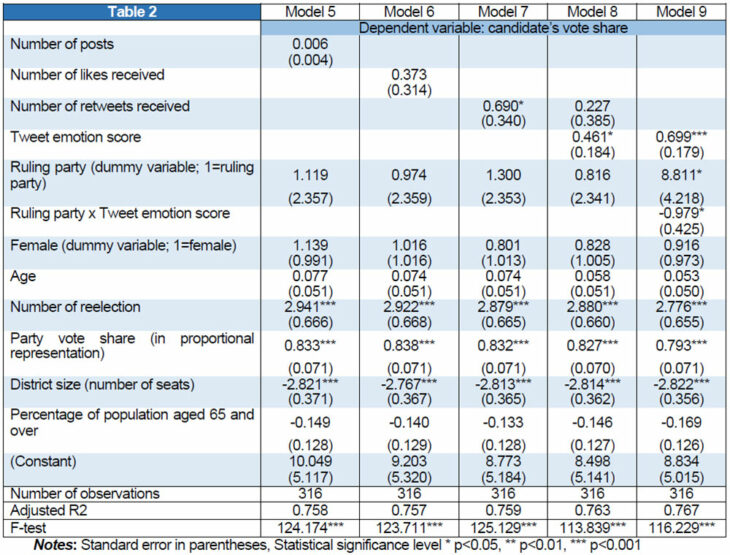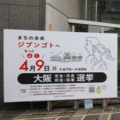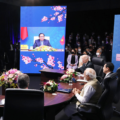Will Politicians’ Use of Social Networking Services Change Elections?
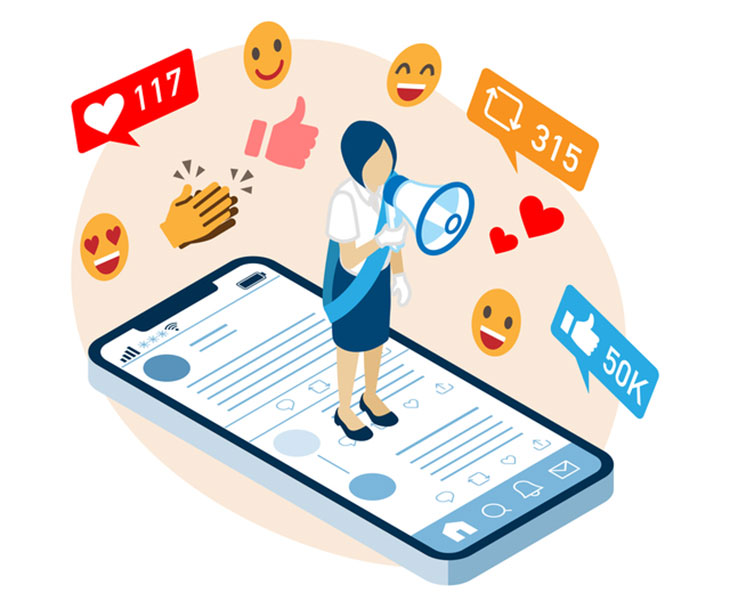
“Given the changing relationship between voters and politicians in today’s Japan, effective social media use by both sides is a condition for the healthy development of democracy in Japan.”
Photo: sayu / PIXTA
Kohno Masaru (Professor, Faculty of Political Science and Economics, Waseda University) and Washio Takumi (19th-class student of the Kohno Masaru Seminar, School of Political Science and Economics, Waseda University)
“Online campaigns” became allowed in 2013, but how has politicians’ use of social networking services affected elections? If politicians can communicate effectively with voters through social networking services, it will lead to a healthy development of democracy.
The relationship between use of social media and vote share
Since the 2013 amendment of the Public Offices Election Law to allow “online campaigns,” many politicians in Japan have, belatedly, begun to utilize social networking services (hereinafter “social media”) for electoral purposes. But no study has yet to show clearly whether and how social media benefit politicians in important elections at the national level.
As such, we have surveyed the activities of politicians who ran as candidates for prefectural district seats in the 2022 Upper House election. In addition to the type and number of social media they regularly use, we also collected data about number of posts on Twitter, number of “likes” received per post, and number of retweets received per post during the election period, in order to measure in real time their actual activities on social media and the responses they garnered. Furthermore, we applied a method called “sentiment analysis” on the contents of their tweeted posts to measure the degree of emotion conveyed, so as to examine the effect of social media not only quantitatively but qualitatively as well.
There were 367 politicians who ran in district races in the last Upper House election. To begin with, let us tally which social media they regularly use based on each candidate’s dedicated page on a website called “Election.com” (https://go2senkyo.com).
Of the six leading social media, Twitter had the highest usage rate with 321 users, or 87.5% of 367 people. Facebook had 75.2%, personal websites 70.0%, YouTube 60.2%, and Instagram 57.0%. Somewhat surprisingly, the usage rate of LINE, which is used by ordinary citizens on a daily basis, was much lower, at 9.9%. We suspect that in the case of LINE, even if the politicians have an account privately, they may not be using it for electoral purposes.
Are there any differences in how each type of social media affects election campaigns? Are politicians able to get more votes by engaging in more vehicles of social media?
Table 1 shows the results of applying a standard statistical method called (multiple) regression analysis to estimate the effect of using each type of social media on the vote share, as well as to detect any tendency that the more social media (out of the abovementioned six types) candidates use, the more votes they get.
Needless to say, there are various factors in addition to social media use that affect each candidate’s vote share in an election. Therefore, in estimation models, we have added a set of control variables for candidate attributes (gender, age, number of times elected in the past) and district characteristics (proportion of population aged 65 and over, number of seats assigned), and percentage of votes candidates’ parties received in proportional representation competition in case vote shares reflect support for the parties they belong to, and finally a dummy variable to control for any advantage of being a ruling party candidate.
Table 1 suggests that Twitter, which has the highest usage rate, yields no statistically significant effect on vote share. The results are the same when a Twitter variable is included in the estimation model alone (Model 1) and when other social media variables are included at the same time (Model 2). Meanwhile, Facebook and personal website reveal some (statistically significant positive) effects. The implication, perhaps, is that Twitter is already versatile enough for most candidates to use, so having an account there alone doesn’t improve vote gain, while Facebook and personal website aren’t as versatile as Twitter and may still have room for differences.
Model 3 and Model 4 are noteworthy. These two models examine the impact of the cumulative total of using many social media, rather than individual social media, on vote share.
Firstly, in Model 3, we can see that the vote share increases by 1.386% with the addition of one more vehicle of social media. Further, to discern the difference in effects between ruling party candidates and opposition candidates, we re-estimated Model 4 by adding an interaction term between the number of social media used and the dummy variable for ruling party candidate. We found that the effects of using social media are indeed significantly different between ruling parties and opposition parties. Specifically, it is estimated that for opposition candidates, the vote share will increase by about 1.600% if the number of social media used increases by one. For ruling party candidates, on the other hand, while belonging to the ruling party is expected to increase their vote share by 19.549%, it is estimated that the effect of using an extra social media on vote share increase is about 3.415% lower than for opposition candidates. Though not shown here (for lack of space), we have more precisely calculated the (marginal) effect of increasing the number of social media used by one, and a statistically significant positive effect can only be confirmed for opposition candidates, not for ruling party candidates.
In general, the more social media politicians use, the more opportunities voters are provided to get to know them. Therefore, it can be assumed that active use of social media has the effect of expanding support, at least potentially. Indeed, if such an effect could not be expected at all, politicians would not see any point in using social media in the first place. However, the above analysis evidently shows that not all use of social media benefits candidates uniformly during elections, at least not in today’s Japan. It is now revealed, based on empirical data, that social media whose use brings about benefit during elections are limited to certain types, and that their effect on increasing vote share is only clearly observable for opposition candidates.
“Quality” effects outweigh “quantity” effects
The previous section analyzed factors such as the type and number of social media that candidates regularly use. However, during the election period, candidates send messages to voters through social media on a daily basis to promote their policies and personalities. In order to more closely examine the benefits of using social media on election results, it is necessary to measure these concrete activities and reactions to them in real time and to analyze their effects systematically.
For these purposes, we decided to focus on Twitter, which has the highest usage rate, and we manually collected relevant data for each candidate immediately after the election was over. Specifically, for each candidate’s Twitter account, we identified posts entered during the election period, and created a dataset containing the number of these posts, number of “likes” received per post, and number of retweets received per post, using a statistical software package called “rtweet” that links with the Twitter API (Application Programming Interface). Of 321 candidates who had Twitter accounts, data could not be obtained for 5 due to a malfunction in the collection tool; the sample used for the following analysis thus consists of 316 candidates.
We surmise that if social media, especially Twitter, affect election outcomes, such an impact must depend not only on the quantitative aspect of activities, such as how many tweets were made and how many responses were received, but also on the content of the tweets. Candidates may tweet a lot, but if their messages don’t resonate with voters they may not yield a tangible effect in terms of expanding support. On the other hand, voters may empathize with candidates who do not send out messages so frequently but whose messages do have strong appeal, and they may even become motivated to support the candidate.
In this study, in order to evaluate Twitter posts objectively (that is, without subjective or post-hoc judgment), we applied a method called “sentiment analysis” to measure the emotion score of what is tweeted. Sentiment analysis is a variant of text analysis method that evaluates contents based on the constituent words. This analysis requires a dictionary that maps the emotional tendency, positive and negative, associated with each word. At present, there are only three such dictionaries for Japanese available, but one that excels in being able to quantify the degree of emotion is the “Word Emotion Polarity Correspondence Table” developed by Takamura Hiroya. This dictionary allows us not only to determine whether the impression of a word is positive or negative, but also to assign a particular score for that word (based on the vocabulary network) in a range between the most negative and the most positive values.
We mechanically divided up all Twitter text into words (using a software called RMeCab) and specified the emotion score of each word, in a range from the value of -1 to +1, by associating each word with the above “correspondence table.” Regardless of whether the emotion expressed in the message swung to the positive or negative tendency, the obtained numerical score was converted to an absolute value to measure the amount of emotion imbued. The absolute value was multiplied by the frequency of occurrence for each word, and scores for all the words that appeared were aggregated and then divided by the number of posts (for this procedure, any word not listed in the “correspondence table” was considered to have an emotional value of 0). In this way we obtained, for each candidate, a “tweet emotion score,” this being the average of emotional values of all tweets the candidate made during the election period.
Table 2 summarizes the results of the (multiple) regression analysis, showing whether variables that capture different aspects of Twitter communication during the election period affect vote share. Firstly, in Models 5 to 7, the effects of variables that measure quantitative aspects of communication, namely number of posts, number of “likes” received, and number of retweets received, were estimated respectively. Among them, the results for Model 5 clearly indicate it is not the case that the more a candidate posts, the more votes they will receive.
Among the quantitative indicators, only the retweet variable included in Model 7 is confirmed to have a positive effect on vote share. However, when tweet emotion score, which captures the qualitative aspect of social media communication, is added in Model 8, the retweet coefficient is no longer estimated to be statistically significant. On the other hand, the tweet emotion score itself is confirmed to have a (statistically significant) positive effect on vote share. It is as if the quality effect of the message outweighs the quantity effect, in that the depth of emotion imbued contributes to an efficient spread of the message as measured by an increase in the number of retweets received. Based on this analysis, a correct interpretation is thus more likely to be that it is the qualitative contents of posts that improve vote share, as far as Twitter posts are concerned.
Even more worthy to note is Model 9. This model considers the possibility that the impact of tweet emotion score may differ between ruling party candidates and opposition candidates, by including an interaction term between that variable and the dummy variable for ruling party candidate. The results indicate that the coefficients for both emotion score itself and the interaction term are estimated to be statistically significant (at the 0.1% and 5% levels, respectively), pointing unambiguously to such a difference.
Specifically, in the case of opposition candidates, a 1-percentage point increase in tweet emotion score tends to increase vote share by 0.699%. However, for ruling party candidates, while being a ruling party candidate is expected to increase their vote share by 8.811%, the effect of a 1-percentage point increase in emotion score is estimated to be 0.979% lower than for opposition candidates. Though not shown here (for lack of space), we have calculated the (marginal) effect of emotion score more precisely, and a statistically significant positive effect can only be confirmed for opposition candidates, not for ruling party candidates
The above analysis, in addition to the examination in the previous section, clearly shows that use of social media during elections does not automatically benefit candidates. The data show that the qualitative contents of Twitter messages, rather than their quantitative aspects, have the effect of improving vote share, and that this effect is only clearly observable for opposition candidates.
Enhancing electoral competition
Today, social media is indispensable as an everyday communication tool, with its uses and types increasingly diversified. A recent survey predicted that the number of social media users in Japan would reach 82.7 million by the end of 2022 (Survey on Social Networking Service Usage Trends in 2022, ICT Research & Consulting Inc.). In this context, there should be no doubt that politicians place importance on social media as an attractive way to strengthen voters’ empathy with their ideas and existence.
However, in Japan, because of the initial delay in legalizing online campaigns, questions have remained about the benefits of politicians’ use of social media. There is no conventional wisdom as to whether politicians’ use of social media can improve vote share, especially in national elections. We, in this study, have conducted an empirical inquiry to fill this academic vacuum, by originally collecting data and creating variables. Before closing, we would like to summarize the findings revealed as a result of our analysis.
Firstly, we found that the more social media politicians use to run their election campaigns, the better their vote share. This reflects the reality that not only Twitter and Facebook but also various other social media are now utilized in election campaigns. Most recently, the COVID-19 pandemic has restricted the activities of politicians and changed the way campaigns are conducted. As such, it would not be surprising if the political influence of social media has increased.
Secondly, our research also confirmed that the positive effects of social media usage on election results were limited to particular social media vehicles. One may interpret this as confirming that what is critical is “effective use,” not just “use,” of social media. Using social media, especially one like Twitter, which is now used by many candidates, has become the norm; simply having an account, thus, does not provide any political benefits.
Thirdly, it was found that politicians who clearly conveyed their emotions were more successful in improving their vote share. In our view, it is extremely important that we, for the first time, have been able to present solid empirical evidence that not blindly increasing the number of posts but rather cultivating voters’ empathy through posts enhances the effectiveness of social media communication.
Fourthly, our analysis revealed that the political benefits of using social media are distinctly observable for opposition candidates but not ruling party candidates. As is well known, so-called swing voters make up the majority of voters in today’s Japan. This implies that the chance of big political changes occurring is contingent on how these voters act. Social media can be utilized equally by all candidates regardless of whether they possess the so-called “three bans,” namely jiban (constituency base), kanban (name recognition), and kaban (money). Thus, if politicians can captivate the interest of these swing voters and cultivate their empathy through social media, this may increase the competitiveness of elections, which forms the basis of democracy.
Of course, this study leaves some questions unanswered. In the absence of similar studies, we conducted our sentiment analysis by borrowing Takamura’s “Word Emotion Polarity Correspondence Table,” and adopted measurements by converting scales into absolute values. As this was our original methodological application, we would like to await future evaluation of its suitability as a means of qualitative analysis of social media text data. We also accept criticism that the analysis conducted in this study is not appropriate for causal inference in a strict sense. In order to verify the effectiveness of social media use, it would be necessary to compare two situations, one in which a candidate used social media and the other in which the same candidate did not (as a counterfactual situation). As such counterfactual hypothetical data cannot be obtained, the analysis conducted in this study remains only the next best method.
Despite these shortcomings, we nevertheless think it is meaningful to show that social media use actually can work effectively as a means to directly connect voters and politicians in the context of a national-level election. Given the changing relationship between voters and politicians in today’s Japan, effective use of social media by both sides is a condition for the healthy development of democracy in Japan.
We would like to conclude by expressing our hope that politicians take seriously communication with voters through social media; the passionate and sincere promotion of their policies as well as their personalities will help in winning elections and ultimately facilitating a healthy political environment in this country.
Translated from “Seijika no SNS riyo wa Senkyo wo kaeruka (Will Politicians’ Use of Social Networking Services Change Elections?),” Voice, May 2023, pp. 210-217. (Courtesy of PHP Institute) [June 2023]
Keywords
- Kohno Masaru
- Washio Takumi
- Waseda University
- online campaigns
- elections
- social networking services
- politicians
- voters
- social media
- vote share
- personal website
- YouTube
- LINE
- tweets
- quantity
- quality
- emotional value
- sentiment analysis
- regression analysis
- word emotion polarity
- voter sympathy
- voters’ empathy
- vote gain
- swing voters
- jiban, kaban, kanban
